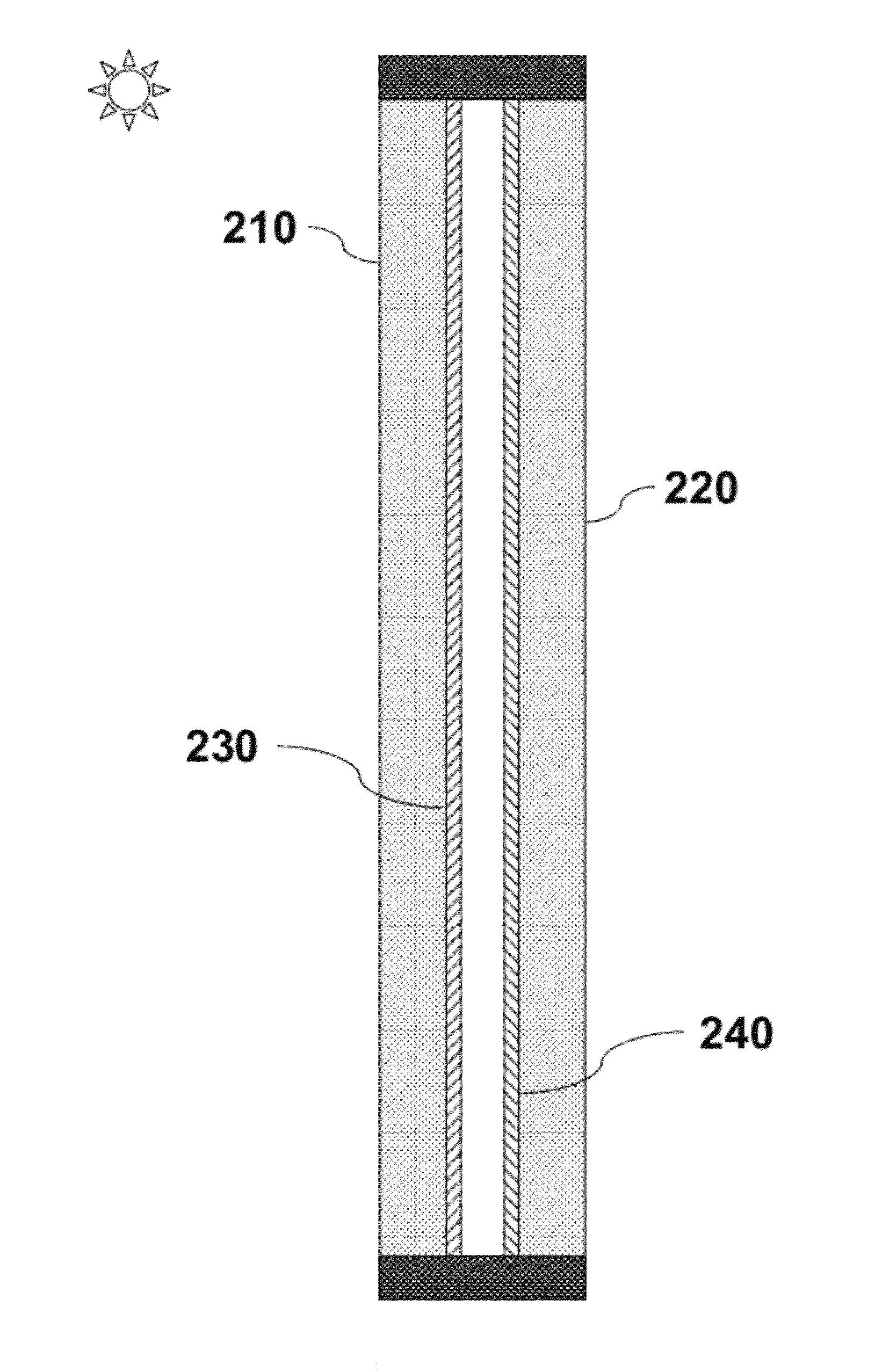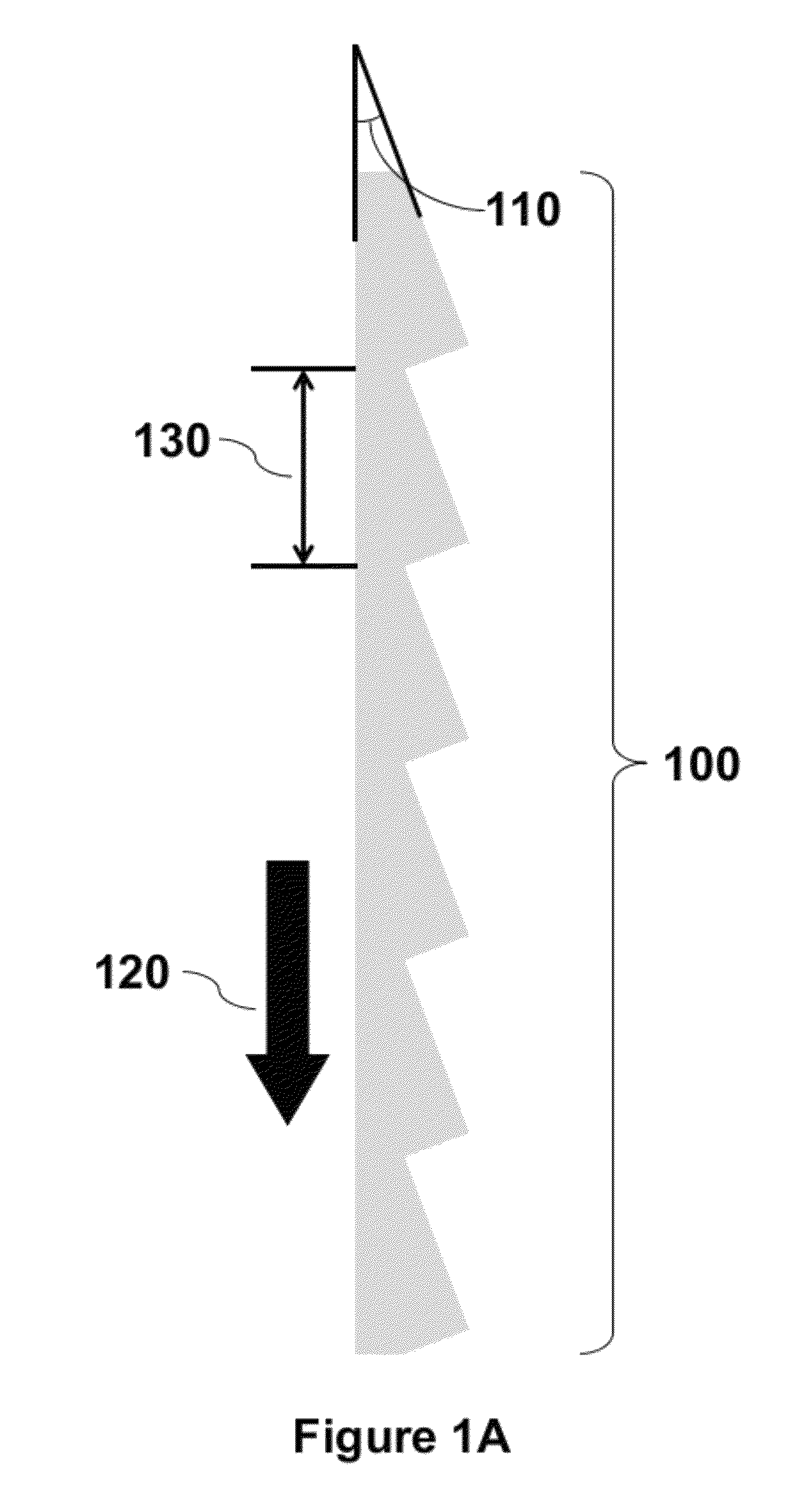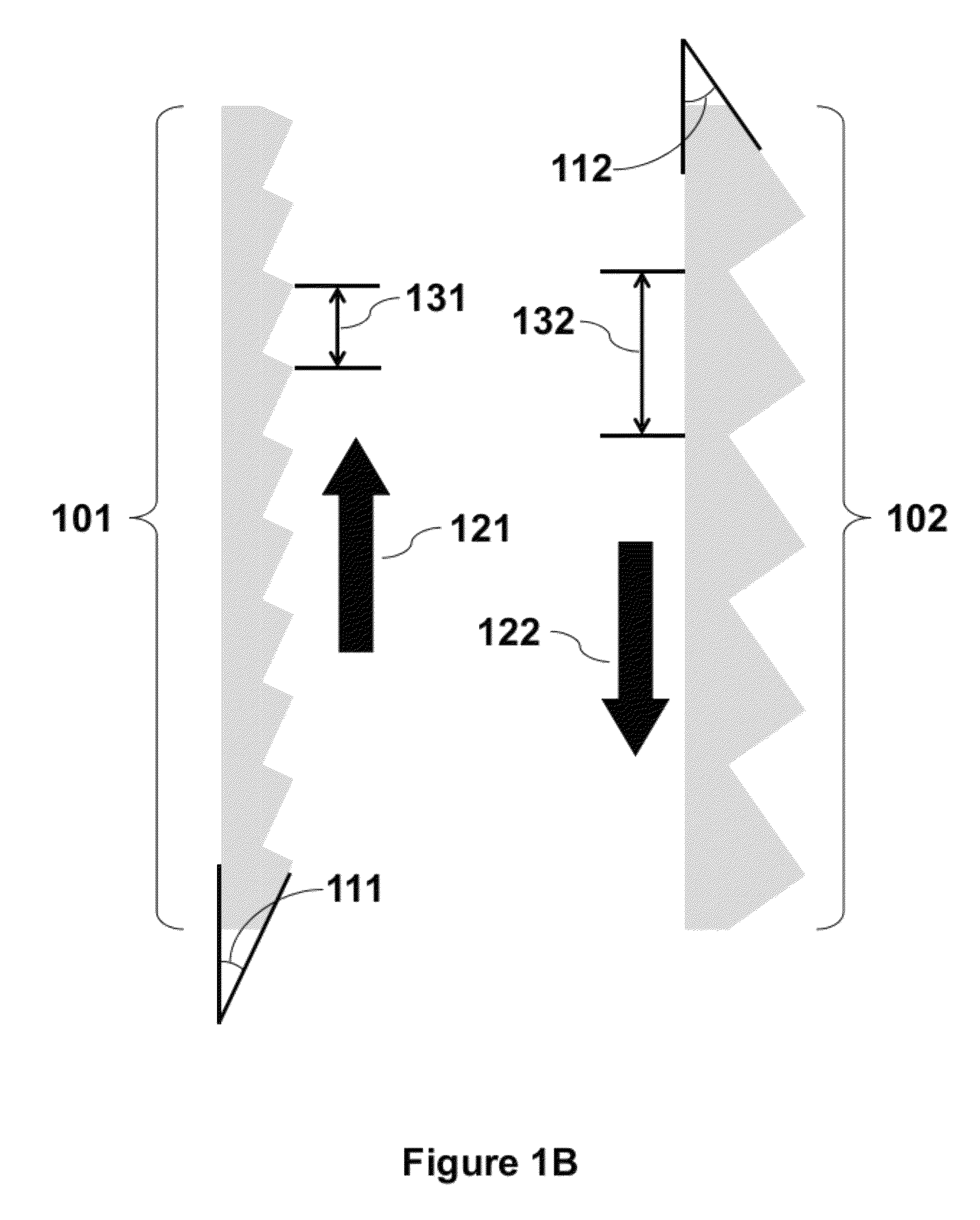Energy-efficient smart window system
a smart window and energy-saving technology, applied in the direction of door/window protective devices, instruments, electromagnetic radiation sensing, etc., can solve the problems of the need for extra interior lighting, and the inability to control the system. the effect of maximizing the efficiency of the window
- Summary
- Abstract
- Description
- Claims
- Application Information
AI Technical Summary
Benefits of technology
Problems solved by technology
Method used
Image
Examples
example 1
Energy-Efficient Smart Window System
[0085]This example describes a smart window having the ability to angularly separate the visible (VIS) spectral region from the near-infrared (NIR) region of solar radiation using multiple physical diffractive structures, such as blazed diffraction gratings. For example, a blazed grating used in this example is designed for a specific wavelength region such that most of the diffracted radiation for that wavelength region is directed into the first order. Normally, employing such a blazed grating designed for the NIR region around 1 μm, the diffracted NIR radiation can be directed into the first order with high efficiency, whereas the first order diffraction efficiency of the VIS radiation will be very low. However, for effective angular separation of the VIS and NIR spectral components of the solar radiation by such a grating, a problem arises due to the second diffraction order because a blazed grating that is designed for 1 μm in the first order...
PUM
 Login to View More
Login to View More Abstract
Description
Claims
Application Information
 Login to View More
Login to View More - R&D
- Intellectual Property
- Life Sciences
- Materials
- Tech Scout
- Unparalleled Data Quality
- Higher Quality Content
- 60% Fewer Hallucinations
Browse by: Latest US Patents, China's latest patents, Technical Efficacy Thesaurus, Application Domain, Technology Topic, Popular Technical Reports.
© 2025 PatSnap. All rights reserved.Legal|Privacy policy|Modern Slavery Act Transparency Statement|Sitemap|About US| Contact US: help@patsnap.com



